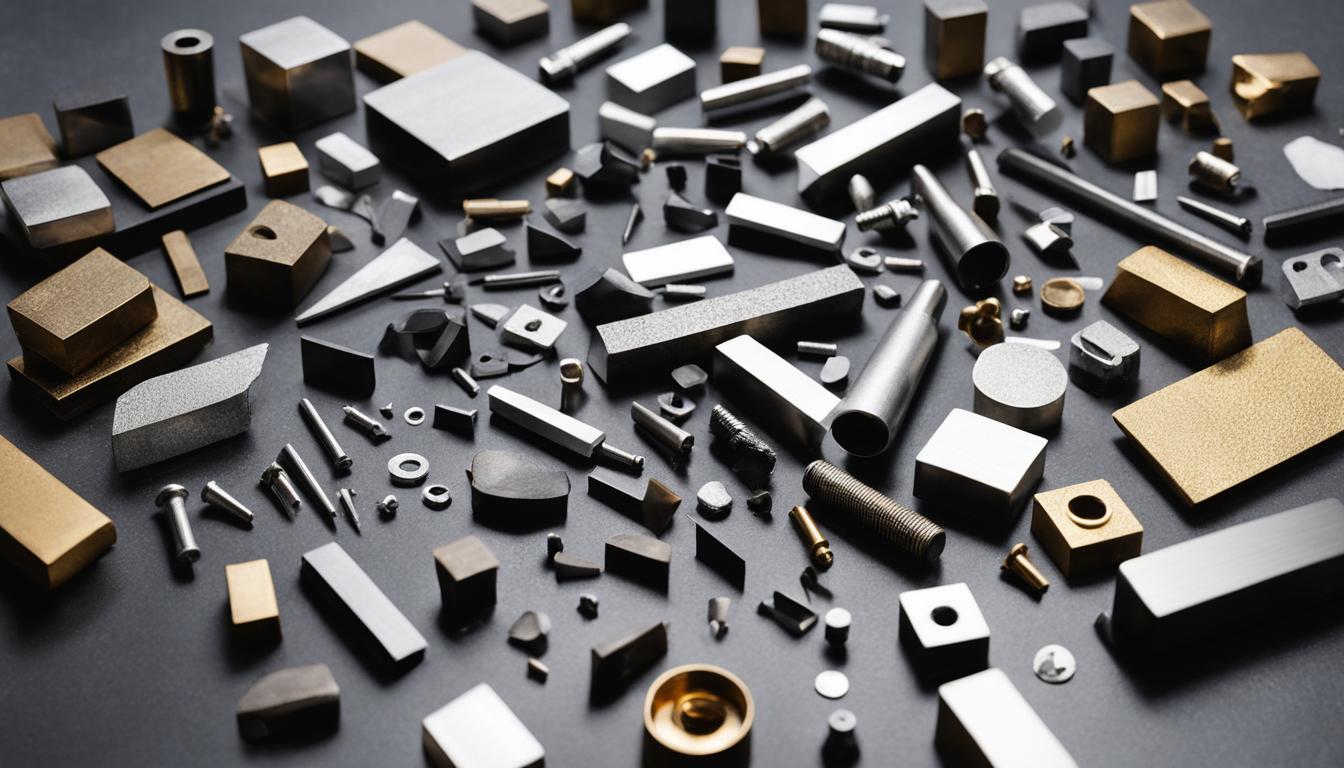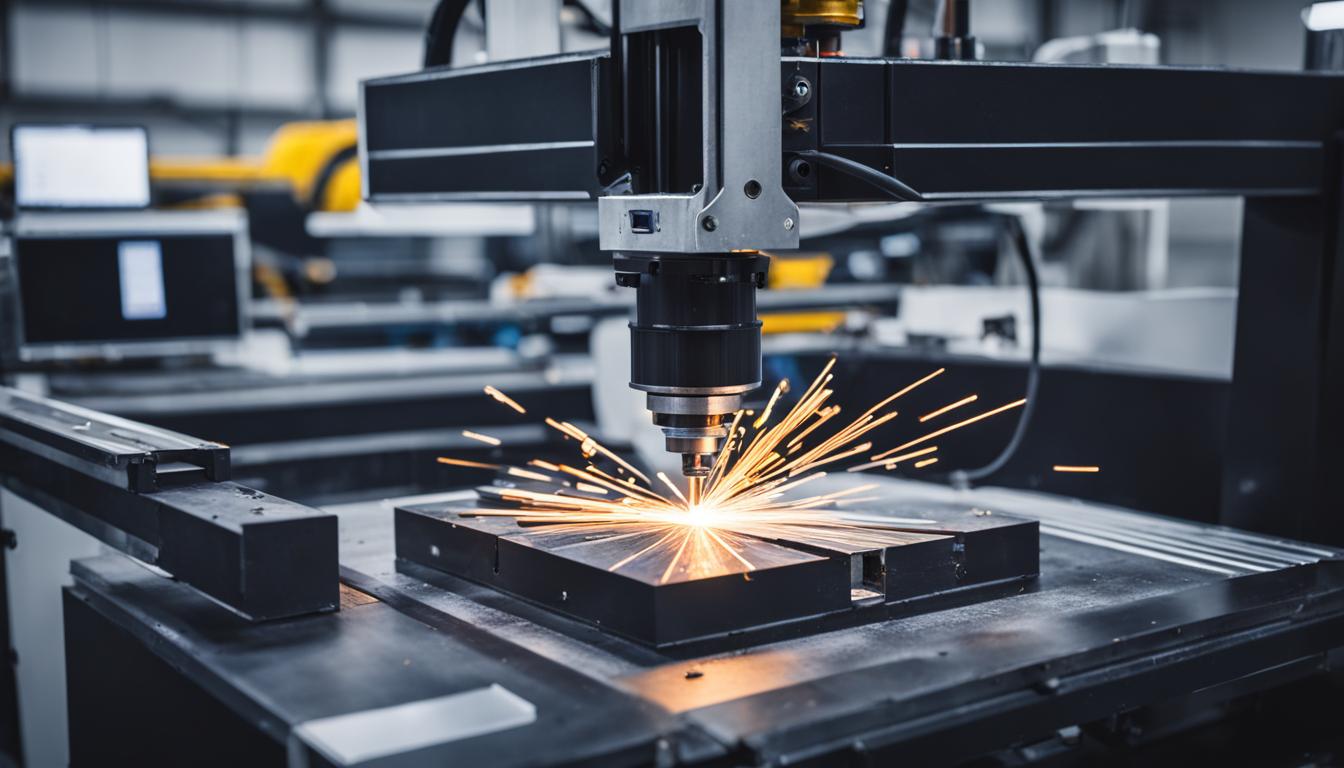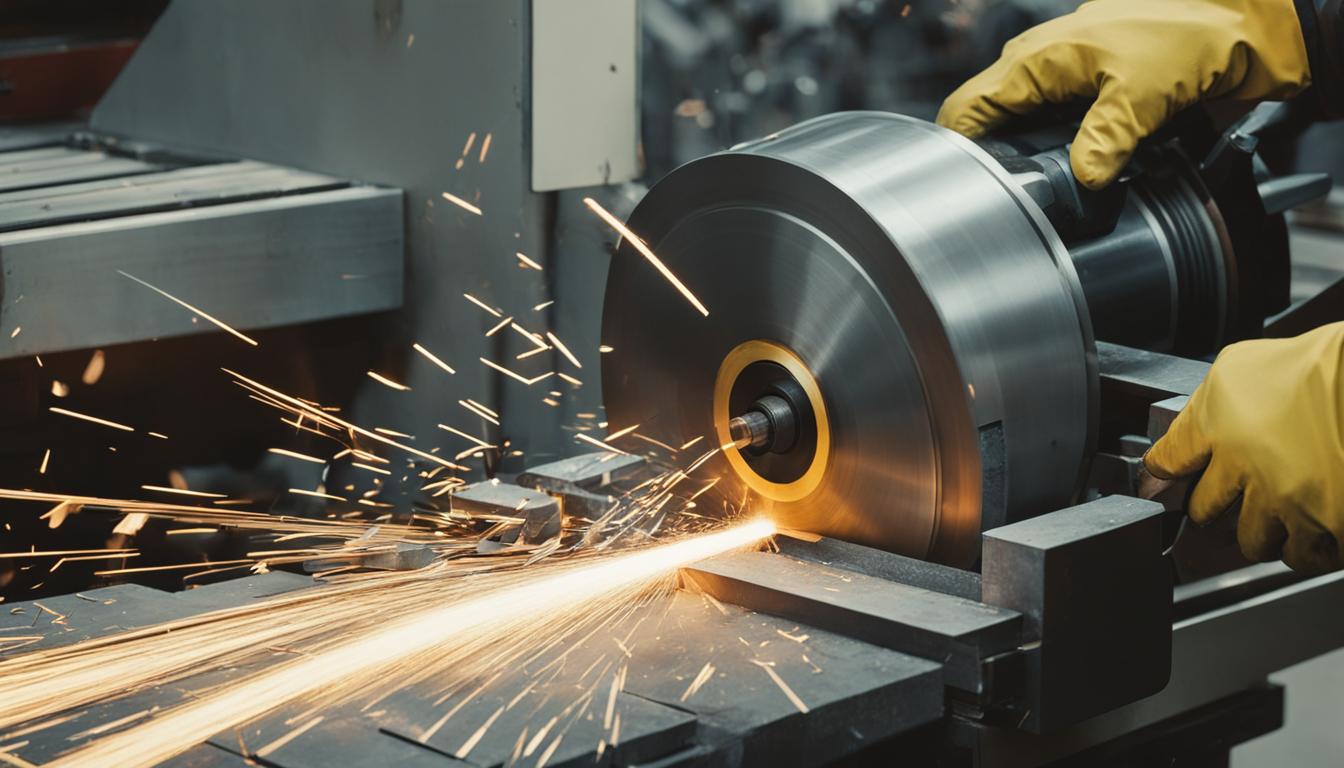Are you curious about the machining metal process? Look no further. In this article, we will delve into the world of metal machining, exploring the process, techniques, and materials involved in this essential manufacturing practice.
Machining is a technical process used to shape metals and other raw materials into parts, tools, and instruments. It plays a crucial role in metal fabrication and processing. Machine shops utilize a wide range of equipment, including mills, lathes, drill presses, and even 3D printers, to cut or add material to achieve the desired outcome.
Commonly used on metals like stainless steel, aluminum, brass, titanium, copper, and various plastics, machining allows for precise shaping and customization of materials. It is not limited to metal alone but can also be applied to wood, ceramic, and plastic.
Whether you are a manufacturer, engineer, or simply curious about the process behind the objects we use daily, understanding the machining metal process is fundamental. Let’s explore the techniques, materials, and tools involved to gain a deeper appreciation for this intricate and versatile manufacturing practice.
What is Machining?
Machining is the process of removing material, typically metal, to create parts for machines, tools, transportation, and more. It is a fundamental manufacturing technique that involves precise cutting and shaping to achieve accuracy and functionality in the final product. Machining is commonly performed in machine shops by skilled machinists who operate specialized equipment such as lathes, mills, and drill presses.
Machining Process
The machining process starts with a raw material, such as a metal billet or a piece of stock material. The machinist carefully removes excess material with precise cuts, using different machining techniques and methods. This process transforms the raw material into the desired shape and size, meeting specific design requirements.
Precision Machining
Precision machining is a key aspect of the machining process. It emphasizes accuracy and repeatability, ensuring that the machined parts meet tight tolerances and functional specifications. Precision machining requires skilled operators, advanced machinery, and careful quality control measures. With precision machining, manufacturers can produce complex components with high levels of accuracy and reliability.
Machining Techniques and Methods
There are various machining techniques and methods that machinists employ to achieve specific results. Some common machining techniques include:
- Turning: This technique involves rotating the workpiece while a cutting tool removes material.
- Milling: A rotating cutting tool brings cutting edges into contact with the workpiece to remove material.
- Drilling: Creating round holes using a rotating cutter, often done with drill presses.
- Boring: Widely used to finish and enlarge pre-existing holes.
- Reaming: Smoothing existing holes using a rotary cutting tool.
- Grinding: Using a rotating wheel for cutting and finishing.
By applying these machining techniques, machinists can shape materials with precision, meet design specifications, and deliver high-quality parts.
| Machining Techniques | Description |
|---|---|
| Turning | Rotating the workpiece while a cutting tool removes material |
| Milling | A rotating cutting tool brings cutting edges into contact with the workpiece to remove material |
| Drilling | Creating round holes using a rotating cutter, often done with drill presses |
| Boring | Widely used to finish and enlarge pre-existing holes |
| Reaming | Smoothing existing holes using a rotary cutting tool |
| Grinding | Using a rotating wheel for cutting and finishing |
What Materials Can be Machined?
Machining is a versatile process that can be applied to various materials, including metals and plastics. Let’s explore the different materials commonly used in machining:
1. Stainless Steel
Stainless steel is a popular choice for machining due to its exceptional strength, corrosion resistance, and durability. It is commonly used in industries such as automotive, aerospace, and medical equipment manufacturing.
2. Aluminum
Aluminum is a lightweight and cost-effective material that is widely used in machining. It offers excellent thermal and electrical conductivity, making it suitable for applications in the automotive, aerospace, and electronics industries.
3. Brass
Brass is an economical option for machining, known for its good mechanical properties and resistance to corrosion. However, it is not suitable for semiconductor products due to its electrical conductivity.
4. Titanium
Titanium is a strong yet lightweight material that is commonly used in aerospace, medical, and automotive industries. It offers excellent corrosion resistance and high strength-to-weight ratio, but it is more expensive compared to other materials.
5. Copper
Copper is a versatile material widely used in electrical applications due to its excellent electrical conductivity. It is also easy to machine and offers good thermal conductivity, making it suitable for heat exchangers and electrical connectors.
6. Plastics
Plastics such as acrylic, nylon, and polycarbonate are commonly used in machining, especially in industries such as medical, electrical, and scientific. They are lightweight, inexpensive, and non-conductive, making them ideal for specific applications.
These materials provide a wide range of options for machining, allowing manufacturers to create parts and components with precise specifications. The choice of material depends on the desired properties, application requirements, and cost considerations.

Machining Processes Explained
In machining, various processes are employed to achieve specific shapes, sizes, and surface finishes. Let’s explore some of the key machining processes:
1. Turning
Turning is a fundamental machining process that involves rotating the workpiece while a cutting tool removes material. This process is commonly performed on lathes, which securely hold and rotate the workpiece. Turning is ideal for creating cylindrical shapes and achieving high accuracy and surface finish.
2. Milling
Milling utilizes a rotating cutting tool with multiple cutting edges to bring those edges into contact with the workpiece. This process can be performed horizontally, vertically, or at various angles to create a wide range of shapes and features. Milling is widely used for producing flat surfaces, slots, and complex three-dimensional geometries.
3. Drilling
Drilling is a machining process that involves creating new holes or refining existing ones using a rotating cutter. Typically, drill presses are used for drilling operations. This process is frequently employed in manufacturing to produce holes with precise diameters, depths, and surface finishes.
4. Boring
Boring is a machining process used to finish and enlarge pre-existing holes. It is commonly applied when high precision and surface finish are required. Boring removes minimal material, making it an efficient technique for achieving specific dimensional requirements and improving the alignment and accuracy of holes.
5. Reaming
Reaming is a process that smooths existing holes using a rotary cutting tool called a reamer. Reamers remove a small amount of material and improve the surface finish, roundness, and alignment of holes. This process is essential for achieving precise dimensions and ensuring proper fit and functionality.
These machining processes play crucial roles in shaping and transforming raw materials into functional components. By understanding their functionalities and applications, manufacturers can select the appropriate machining techniques to achieve their desired outcomes.
Machining Techniques
In the world of manufacturing, machining offers a range of techniques to shape and fabricate various objects. These techniques can be broadly classified into subtractive machining and additive machining.
Subtractive Machining
Subtractive machining, as the name suggests, involves removing material from a larger piece to create the desired shape. This technique is widely used in traditional machining processes and relies on cutting, drilling, and milling operations. By employing cutting tools such as drills, mills, and lathes, machinists shape the raw material into the desired form. Subtractive machining is known for its precision and ability to produce complex geometries.
Additive Machining: 3D Printing
One of the fastest-growing machining techniques is additive machining, commonly known as 3D printing. Unlike subtractive machining, additive manufacturing involves building a three-dimensional object layer by layer. Beginning with a digital model, additive machines deposit material, often in the form of polymers or metals, to gradually construct the final product. 3D printing offers numerous advantages such as the ability to create lightweight and complex parts with minimal material waste.

CNC Machining
Computer Numerical Control (CNC) machining is a form of subtractive machining that combines advanced technology with traditional machining techniques. With the help of computer-controlled machines, CNC machining automates the manufacturing process, enabling precise and efficient production. The CNC system interprets digital instructions to control the movement and operation of cutting tools on the workpiece, resulting in high accuracy and repeatability. CNC machining is widely used in industries where precision and reliability are paramount.
To summarize, machining techniques encompass both subtractive and additive processes. Subtractive machining involves removing material, while additive machining, exemplified by 3D printing, adds material layer by layer. CNC machining integrates the advantages of automation and precise control to optimize manufacturing processes.
Common Machine Shop Tools
Machine shops rely on a diverse range of tools to execute different stages of the manufacturing process. These tools are essential for shaping, cutting, and finishing materials to create precise and functional parts. Below are some of the most commonly used machine shop tools:
Cutting Tools
Cutting tools such as saws and shears are indispensable in the machine shop. These tools enable precise cutting of materials to specific dimensions, ensuring accuracy and consistency in the manufacturing process.
Boring Tools
Boring tools are used to enlarge or reshape existing holes in workpieces. They play a crucial role in achieving the desired dimensions and smoothness of holes for proper fitment of components.
Drilling Tools
Drilling tools are designed to create round holes in various materials. They are commonly used in the machine shop for tasks that require precision drilling, such as creating holes for fasteners and components.
Turning Tools
Turning tools are utilized in the process of rotating the workpiece while a cutting tool removes material to create cylindrical shapes. This technique is commonly performed on lathes and is essential for producing components like shafts, pins, and rods.
Grinding Tools
Grinding tools employ a rotating wheel to perform cutting and finishing operations on workpieces. They are used to achieve smooth surfaces, precise dimensions, and improved surface quality. Grinding tools are vital for creating accurate and high-quality components.
Milling Tools
Milling tools are equipped with multiple cutting edges, allowing for the precise shaping of workpieces. They are designed to remove material from the workpiece in a rotational motion, enabling the creation of intricate shapes and contours.
These common machine shop tools, along with many others, form the backbone of the machining process. They enable machine shops to fabricate a wide range of components and products with accuracy and efficiency.
Burning Machining Technology Types
Burning machining technology is a method that utilizes heat or energy to cut through different materials. It offers precise and efficient ways to shape and cut various materials, making it an essential process in the manufacturing industry. Here are three common types of burning machining technologies:
Laser Cutting
Laser cutting is a technique that uses a high-energy beam of light to melt or vaporize materials. The laser beam is controlled by computer programming, allowing for precise and intricate cuts. Laser cutting is known for its accuracy and speed, making it suitable for various applications ranging from metal fabrication to signage production. It is especially effective in cutting thin materials and creating complex shapes.
Oxyfuel Cutting
Oxyfuel cutting involves the use of a combination of oxygen and fuel gas, typically acetylene, to cut and melt materials. In this process, a high-velocity oxygen jet is directed onto the material, causing it to react with the fuel gas and create a chemical reaction that melts the material. Oxyfuel cutting is commonly used for thick materials, such as steel, and is popular in industries like shipbuilding and construction.
Plasma Cutting
Plasma cutting utilizes a stream of plasma generated by an electrical arc to melt and cut through materials. The plasma arc is created by passing an electric current through a gas, such as nitrogen or oxygen, which creates a conductive plasma state. The high-velocity plasma stream heats and melts the material, while a gas jet blows away the molten material. Plasma cutting is versatile, capable of cutting a wide range of electrically conductive materials, including metals and alloys.
These burning machining technologies offer precise and efficient methods for shaping and cutting materials. Whether it’s laser cutting, oxyfuel cutting, or plasma cutting, each technique has its own advantages and applications in various industries.
Erosion Machining Technology Types
Erosion machining technology is a cutting-edge process that utilizes electricity or water to remove material from a workpiece. This innovative technique is often employed for intricate shapes and challenging materials that are difficult to machine using traditional methods.
Water Jet Cutting
One of the prominent erosion machining technologies is water jet cutting, which employs a high-pressure stream of water to erode materials and shape the workpiece. Water jet cutting is highly precise and offers several advantages, including:
- Ability to cut through materials with ease
- No heat-affected zone, thus minimizing the risk of material distortion
- Versatility in cutting various materials, such as metals, composites, stone, and glass
-
Electric Discharge Machining
Another erosion machining method is electric discharge machining (EDM), which utilizes electrical arcs to create micro-craters and precisely remove material from the workpiece. EDM provides several benefits, including:
- Ability to machine complex shapes with exceptional accuracy
- Capability to work with hard materials, such as hardened steel and exotic alloys
- Improved surface finish and dimensional accuracy
- Efficient for creating molds, dies, and prototypes
Erosion machining technology, including water jet cutting and electric discharge machining, revolutionize the manufacturing process by offering precise and efficient solutions for intricate shapes and challenging materials.
